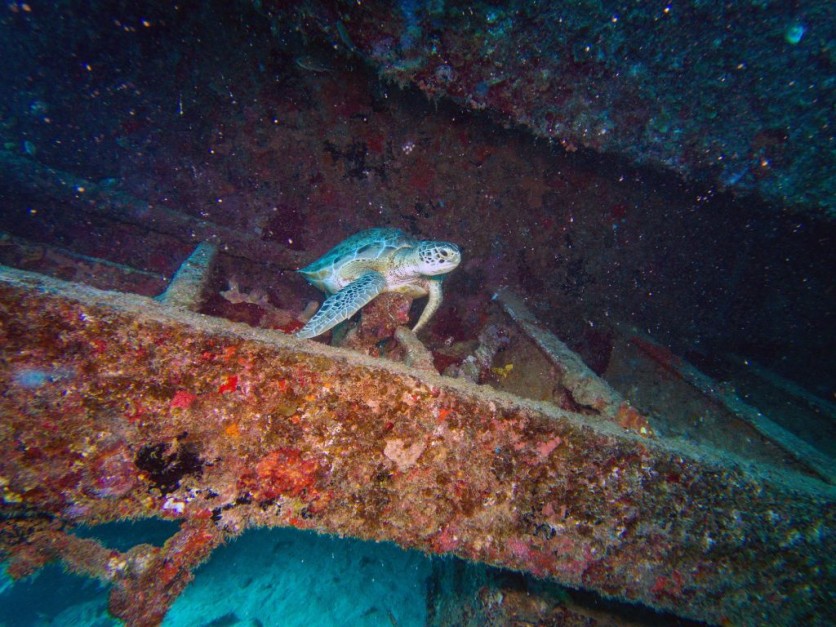A groundbreaking study is demonstrating the unique ability and ecological significance of sunken shipwrecks in providing a secure refuge for marine species, particularly in areas heavily impacted by destructive fishing practices like trawling.

Helping Marine Species to Thrive
A recent study conducted by the University of Plymouth and Blue Marine Foundation revealed that the average density of marine life within shipwreck sites surpassed that of locations regularly subjected to bottom-towed fishing by 240 percent.
Moreover, EurekAlert reported that this density was even more significant in areas within a 50-meter radius of the wrecks on the seabed. Jenny Hickman, the lead author of the study and an MSc student in the Marine Conservation program at the University of Plymouth, highlighted the historical significance of shipwrecks.
These sites, often in existence for over a century, serve as a baseline for ecological potential when trawling pressure is reduced or eliminated.
Hickman emphasized the need for protective measures, especially as shipwreck sites, being inaccessible to trawlers, are spared from the trawling pressure that has significantly altered marine communities for centuries.
Dr. Emma Sheehan, an associate professor of marine ecology and the senior author of the study, emphasized that the findings underscore the positive influence of past human activity on the current state of the seabed.
She further noted that recognizing this impact is crucial and should be considered in the formulation of future marine management plans.
Maintaining a Largely Pristine State
The UK's coastline boasts around 50,000 shipwrecks, serving as hidden havens for fish, corals, and various marine organisms. Many of these wrecks, resting on the seafloor for over a century, act as a natural barrier, shielding them from the impact of bottom towed trawlers.
While significant portions of the seafloor have suffered damage due to intense fishing, BBC reported that the areas in and around these shipwrecks have maintained a largely pristine state, fostering thriving marine ecosystems.
The study, co-authored by Joe Richards, Scotland Project Manager for Blue Marine Foundation, focused on five shipwrecks off the coast of Berwickshire. These wrecks, believed to have sunk in the late nineteenth and early twentieth centuries, played a crucial role in understanding the ecological significance of shipwrecks in marine sanctuaries.
Trawling, characterized by dragging vast nets along the seafloor to capture fish and other organisms, poses substantial risks to seafloor habitats, including coral reefs, sponge beds, and other fragile ecosystems. The large gear involved in trawling has the potential to crush or displace sessile species.
Moreover, Interesting Engineering reported that the practice of trawling is frequently associated with bycatch, the unintended capture of non-target species. This poses a significant threat to non-commercial species, endangered marine life, and other organisms, making bycatch a major concern from both ecological and economic perspectives.
Trawling can upset the equilibrium of the system, impacting predator-prey dynamics and overall biodiversity. Interestingly, shipwreck environments remain unaffected by trawling, allowing organisms in these areas to thrive and grow at impressive rates.
Related Article : Maritime Archaeologists Discover Carvings of Sweden's Famed 17th-Century Warship Vasa

ⓒ 2025 TECHTIMES.com All rights reserved. Do not reproduce without permission.




